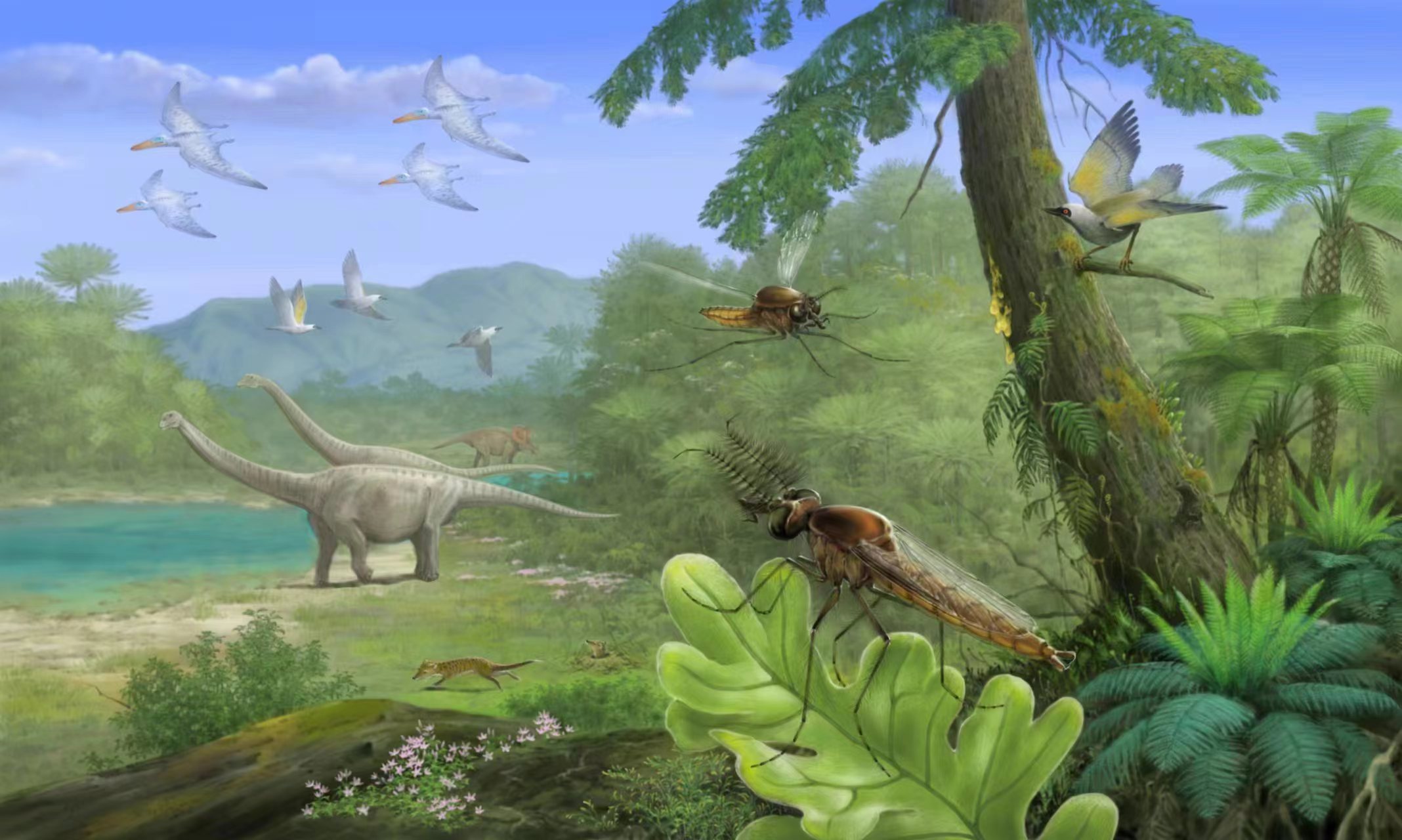Researchers led by Dany Azar from the Nanjing Institute of Geology and Paleontology of the Chinese Academy of Sciences (NIGPAS) and the Lebanese University have found the earliest known fossil mosquitoes ever discovered-in Lower Cretaceous amber from Lebanon. The well-preserved insects are two males of the same species with piercing mouthparts, suggesting they likely sucked blood.
Their findings were published in Current Biology on Dec. 4.
"Molecular dating suggested that the family Culicidae arose during the Jurassic, but previously the oldest record was mid-Cretaceous," said André Nel of the National Museum of Natural History of Paris. "Here we have one from the early Cretaceous, about 30 million years before."
The Culicidae family of arthropods includes more than 3,000 species of mosquitoes. Among modern-day mosquitos, only females are hematophagous, meaning that they use piercing mouth parts to feed on the blood of people and other animals.
Hematophagy in insects is thought to have arisen as a shift from piercing-sucking mouthparts used to extract plant fluids. For example, blood-sucking fleas likely arose from nectar-feeding insects. But the evolution of blood-feeding has been hard to study in part due to gaps in the insect fossil record.
In this study, the researchers described two male mosquitoes with piercing mouthparts, including an exceptionally sharp, triangular mandible and elongated structure with small, toothlike denticles. These findings suggest that male mosquitoes in the past fed on blood as well.
These amber-preserved mosquitoes extend the definitive occurrence of the mosquito family into the early Cretaceous. They also suggest that the evolution of hematophagy was more complicated than had been suspected, with hematophagous males in the distant past.
"In future work, we will try to learn more about the 'utility' of having hematophagy in Cretaceous male mosquitos, and why this no longer exists," said Prof. Dany Azar.

Dorsal view of male mosquito in amber. (Image by NIGPAS)

Detail of mouthparts using a confocal microscope; scale bar, 10 μm. (Image by NIGPAS)

Age recovery of fossil mosquito in Lower Cretaceous amber from Lebanon. (Image by NIGPAS)






